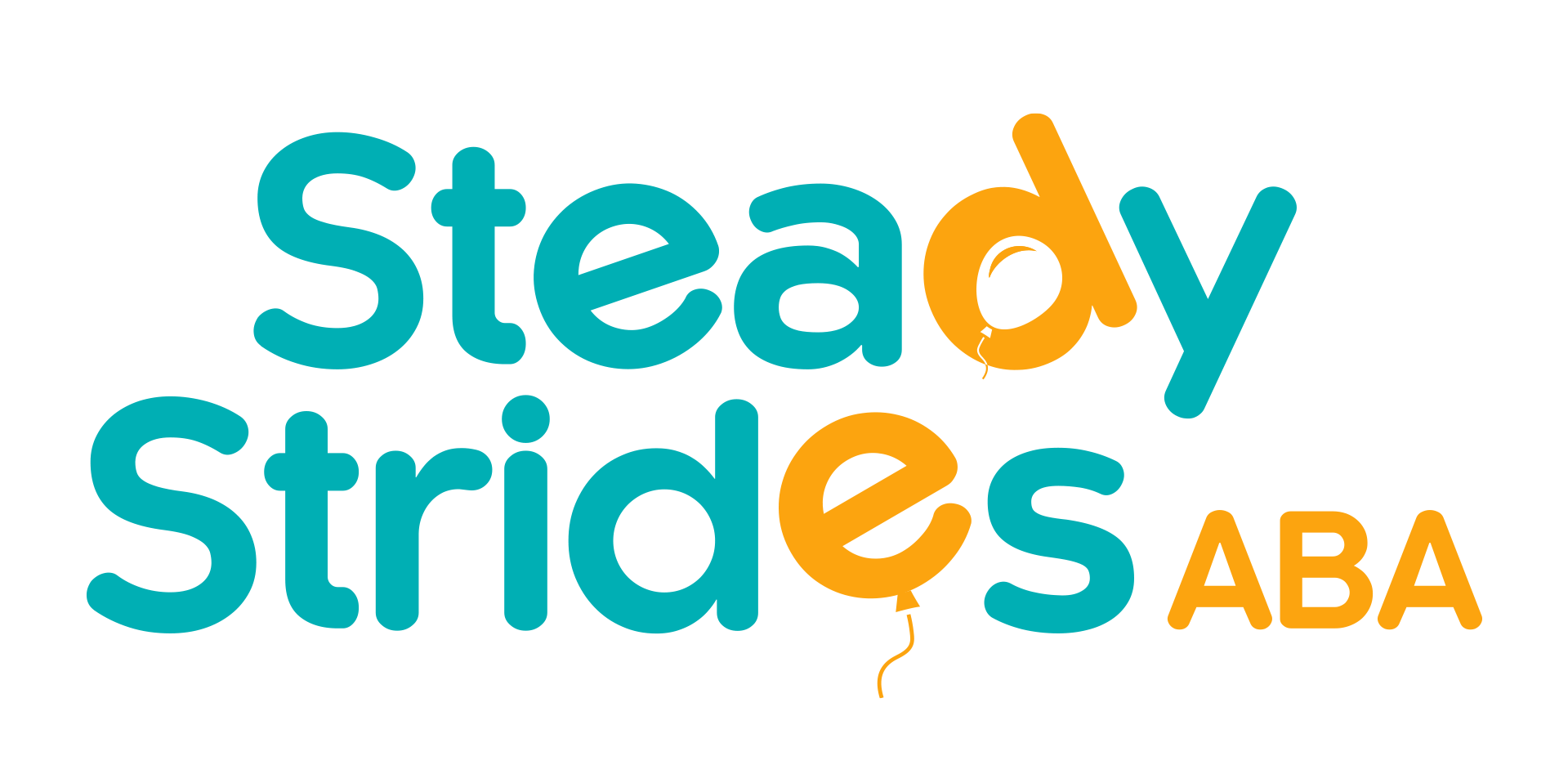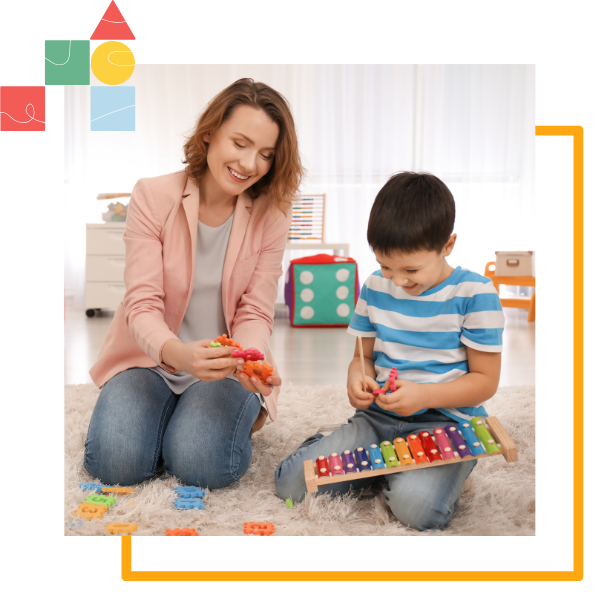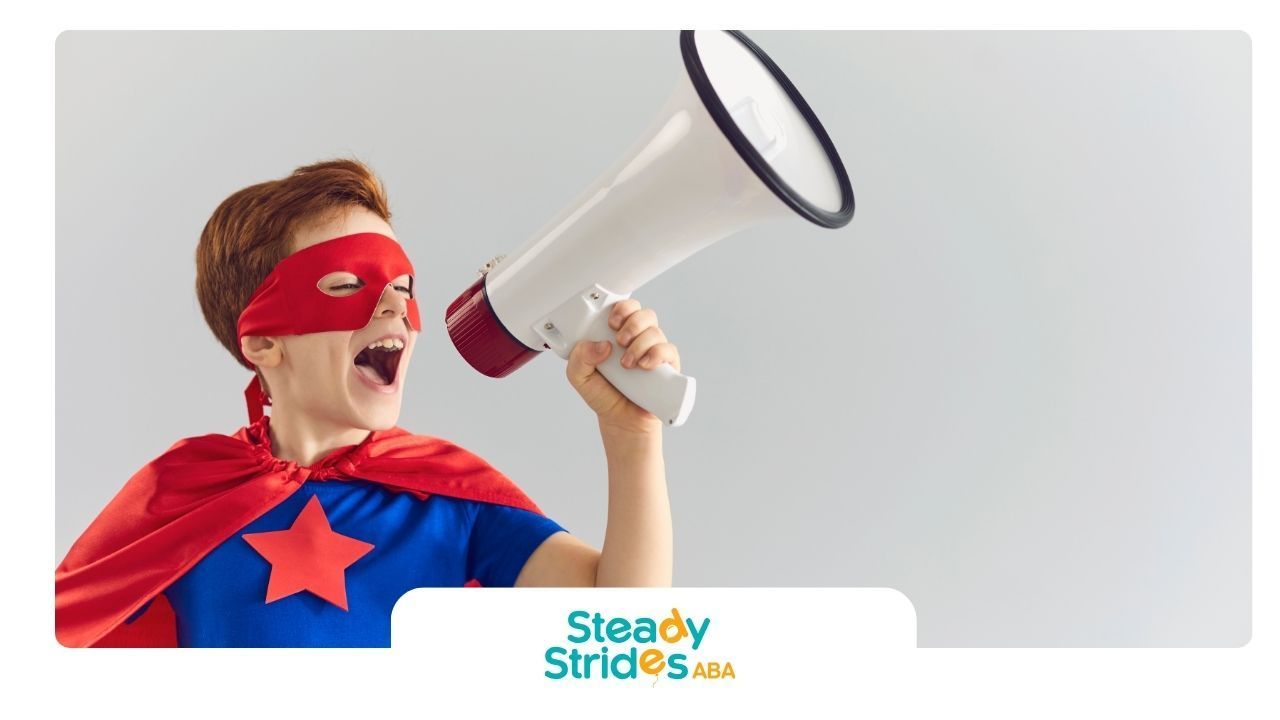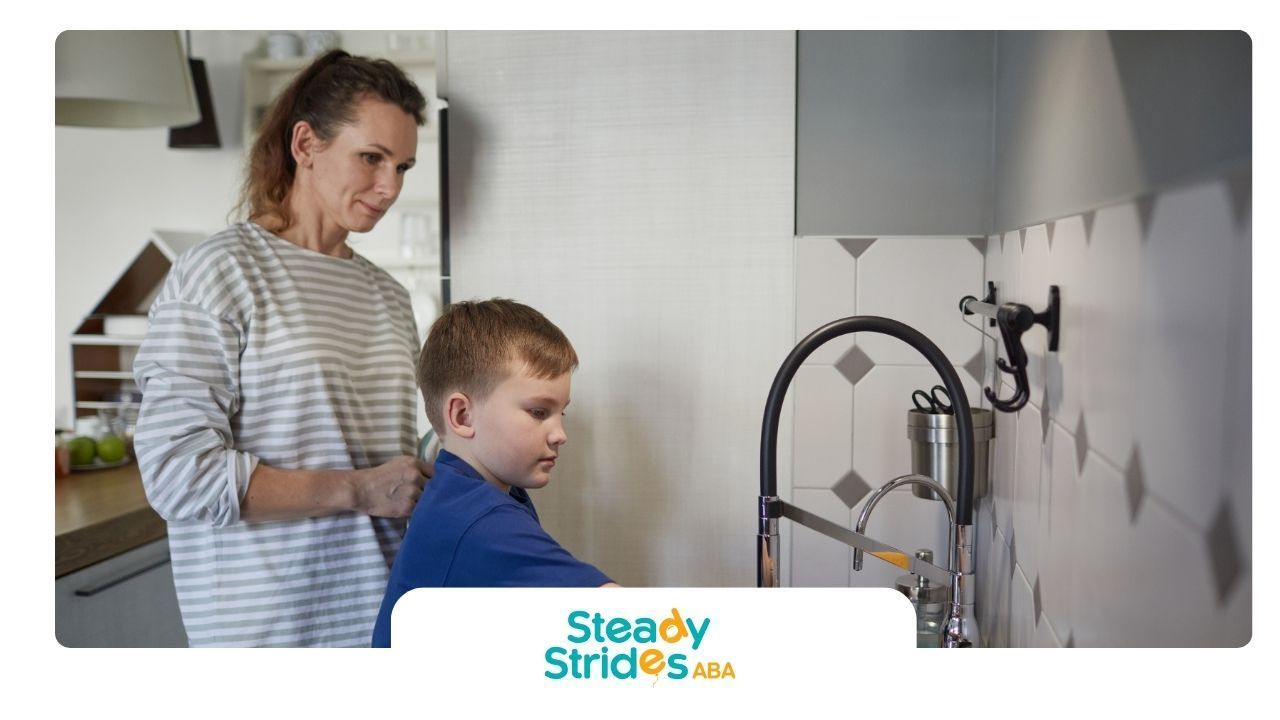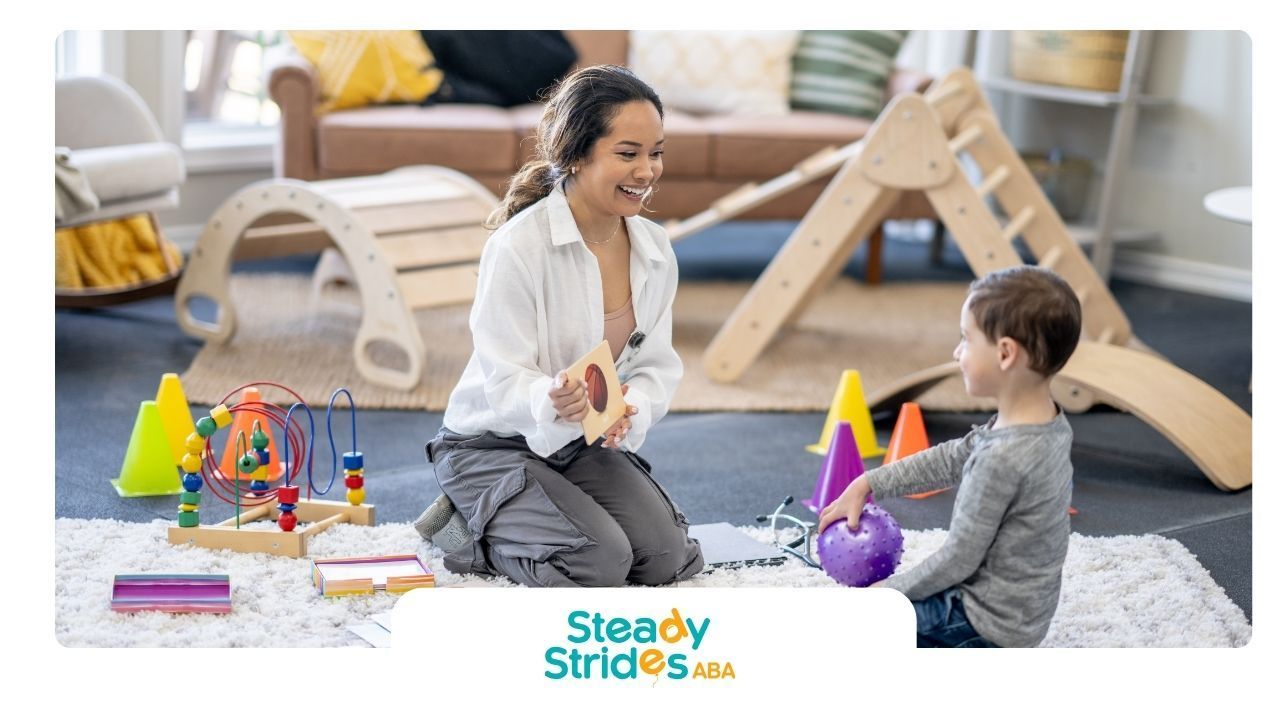Key Highlights
- Comprehensive ABA therapy offers a holistic approach, addressing multiple developmental domains like communication, daily living, and motor skills, while Focused ABA targets specific behavioral concerns or skill deficits.
- Session intensity differs dramatically, with comprehensive therapy requiring 30-40 hours per week versus 10-25 for focused therapy.
- Both approaches employ individualized treatment plans crafted by certified behavior analysts, ensuring alignment with unique needs.
- Focused ABA excels in tackling particular areas, while comprehensive ABA aims at broad developmental progress.
- Parental involvement serves as a cornerstone in both therapies, promoting skill generalization in natural environments.
- ABA interventions play a pivotal role in enriching the quality of life for people with autism spectrum disorder by fostering measurable improvements across critical life skills.
Introduction
Applied Behavior Analysis, or ABA therapy, is now a main way to help people on the autism spectrum and those with other developmental needs. This type of behavior analysis uses proven strategies to change how people act. It can help improve communication skills and deal with problem behaviors. ABA therapy uses rewards again and again to help people learn new, important ways to act. It is important to know about the different types of ABA therapy, like comprehensive or focused programs. This helps families pick the one that best fits their child’s needs.
Overview of ABA Therapy Approaches
ABA therapy includes two main types. There is Comprehensive ABA and there is Focused ABA. Each one is made to help with different people and developmental needs. Comprehensive ABA looks at many things at once. It covers language skills, motor abilities, and social interaction. Focused ABA is used for certain problems or skill deficits. Both use the main ideas of behavior analysis but they are not the same in how much or how wide they go.
To pick the right kind, you need to look at the person's age, where they are in their development, and what their goals are. Whether you want to get better at all things or work on specific areas, aba therapy has a plan to help you make meaningful progress. All of it is made to fit your needs and help you get better in a way that counts.
What is Applied Behavior Analysis (ABA)?
Applied Behavior Analysis (ABA) is a kind of therapy that looks at how people act and what can change their behavior. The goal is to help people use more positive behaviors and cut down on actions that are not good for them. It is based on ideas from learning theory. With this approach, people can get new skills and see a better quality of life. ABA uses real ways to help people improve how they act in their daily life. Behavior analysis helps not only to build important new habits but also to help people feel and do better each day by focusing on skill acquisition and positive behaviors.
The Importance of ABA in Autism Treatment
ABA therapy is at the center of autism treatment. It helps change behavior with planned steps. ABA therapy works to boost key things like talking, social interaction, and daily living skills. The goal is to help those with autism spectrum disorder become more independent. This can lead to a better quality of life for them.
Therapists work closely with families and teachers. They work together to deal with skill deficits. This support happens at school, at home, and in the local community. Working together like this is important. It helps use behavioral intervention and lets the person use their new skills in different places.
There is always careful checking and support given in ABA therapy. This way, ABA therapy can change not just the individual, but also their family life. It helps with behavioral challenges and builds up adaptive skills. These good changes let the person take part in more activities and enjoy their social life with others.
Understanding Comprehensive ABA Therapy
Comprehensive ABA therapy uses a wide approach to help people in different areas of growth. This way of working is an intensive intervention. It is made to help children, mostly younger ones, learn key skills. These skills improve their quality of life. Some of these skills are how they talk with others, how they do in school, and how they take care of their daily routines.
This kind of ABA therapy is good for who need a lot of help in many parts of life. Teachers or therapists use ways like discrete trial training and make special plans for each child. Comprehensive ABA helps to show clear progress and helps people learn to do things by themselves. This therapy is known to work well for many early developmental problems.
Core Features of Comprehensive ABA
Comprehensive ABA therapy uses a complete way to help people by working on many parts of their growth at the same time. The plans are made just for each person. This helps you move forward with what you are good at and work on what you find hard.
- Intensity and Duration: This ABA therapy needs 30-40 hours each week. You get the most from the therapy when you do it often and for longer times.
- Skill Development: Comprehensive ABA therapy helps with important skills like daily living skills, how to talk with others, and moving your body well.
- Natural Environment Teaching: These skills are taught in real-life places and situations. This helps you use them in many parts of your life.
- Individualized Treatment Plans: Each plan is made just for you. Your needs are checked fully before setting up what you will do.
The goal of this therapy is to help you build up skills so you can do things on your own and get better over time. It is made to help with skill development, daily living skills, and bring good changes to your life.
Typical Goals and Outcomes of Comprehensive ABA
Comprehensive ABA therapy works to help each person reach their best by setting clear and measurable goals. These goals fit the different developmental needs the person might have. One big goal is to improve communication skills. This means working on both how a person talks and how they use body language, so they can share their thoughts better with friends and caregivers.
The therapy also tries to lower challenging behaviors. It does this by showing the person other ways to act that fit better in social settings. When someone learns more about getting dressed, eating, or taking care of themselves, they gain more independence. Quality of life goes up because they can join in more with daily routines.
ABA therapists keep an eye on progress by tracking all the data. This helps them make changes when needed, so the goals always match what is working best. Because of this, both the person and their family can see lasting improvements with comprehensive ABA therapy.
Exploring Focused ABA Therapy
Focused ABA therapy is a way to target one or two main areas for skill development or behavior. With this kind of ABA therapy, therapists use proven ABA treatment plans to set clear goals that you can measure and achieve.
This kind of focused ABA therapy works well for people who want short-term help with a specific problem. There is no need for intensive intervention across many areas. Focused ABA therapy is known for being flexible and quick to respond. It helps give you meaningful progress in everyday life. At the same time, it stays true to your unique needs.
Key Characteristics of Focused ABA
The core of focused ABA therapy is about helping people make real progress. The way it works is by working on specific goals that matter most. Therapists use smart methods, such as reinforcement systems, to help with certain behaviors or skills.
- Targeted Approach: The focus is on a few areas, like better talking skills or working on aggression.
- Flexible Intensity: People usually get 10-25 hours of therapy each week, so there is time for other things too.
- Skill Acquisition: Progress is shown with clear results in areas like school, life skills, or social settings.
- Parent Training: When parents learn and get involved, it helps make changes stick outside of therapy sessions.
Focused ABA therapy gives a plan to help people get better at skills that are hard for them. It also helps to fix harmful behaviors. With this targeted approach, specific behaviors can improve, and life skills can grow with the help of both therapy and parent training.
Objectives and Intended Results of Focused ABA
Focused ABA therapy works by helping people make real progress. It does this by taking on specific goals that affect how the person gets through their day. The goals usually look at behavior reduction, which helps a person handle their everyday life and get along better with others.
Key noisemaking behaviors, like not following rules or hurting oneself, are changed with new actions that are better. This is done using reinforcement, where someone gets something they like for making the right choice. This leads to skill acquisition and people can see improvement in the areas they want to work on.
Focused ABA therapy pays close attention to these particular areas, so the help is more useful and stays on track. This makes a person stronger and able to take part in daily life in a more confident way.
Therapy Structure and Implementation Differences
| Aspect | Comprehensive ABA Therapy | Focused ABA Therapy |
|---|---|---|
| Therapy Structure | Focuses on a wide range of behavioral challenges. | Focuses on one or two specific behaviors. |
| Scope of Skills Targeted | Social skills, communication skills, and daily living skills. | Specific areas or challenges like maladaptive behaviors or skill deficits. |
| Session Duration and Intensity | Longer sessions with intensive intervention for multiple areas. | Shorter sessions, focusing on specific goals or behaviors. |
| Goals | Broader, more inclusive support for various aspects of life. | Targeted progress in a particular area or behavior. |
| Best Suited For | Individuals needing broad and intensive support across many areas of life. | Individuals needing help in a specific area or behavior, such as skill acquisition. |
| Implementation | Supports many aspects of life at once. | Targets a focused intervention for specific behavior or skill. |
| Flexibility | Less flexible, as it addresses a broad set of behaviors. | Flexible and adaptable to meet specific needs of the individual. |
The way therapy is set up in ABA can be different depending on where you start, so it is important to know this. Comprehensive ABA therapy looks at the whole picture. It works on many behavioral challenges at the same time. This will help with social skills, communication skills, and also daily living skills. The therapy usually has an intensive intervention. So, each child gets help that fits his or her own unique needs.
On the other hand, focused ABA therapy is more about dealing with specific behaviors. In this kind of ABA therapy, the team uses targeted plans to help a person get better at one or two particular skill. The goal with both types is meaningful progress. But their structures are not the same. Comprehensive programs offer support for many areas of life, while focused interventions only work on a few things. Comprehensive ABA is better if you want wider, full help. Focused ABA therapy is a good pick when the work is just for one area, skill acquisition, or a few specific behaviors.
Session Duration and Intensity
The length and intensity of sessions with ABA therapy can be very different when you look at comprehensive ABA and focused ABA. Comprehensive ABA usually needs more time. It gives an intensive behavioral intervention. This kind works on many parts of development at the same time. This helps people learn different skills, like academic and daily living skills. People get to practice these skills for a longer time.
On the other hand, focused ABA therapy has shorter sessions. It looks closely at specific behaviors or skill deficits. This targeted approach is good because it can change to meet individual needs. It can still be effective because it deals with challenging behaviors and works to build up communication skills. People will see results in many settings where they need to use what they have learned.
Scope of Skills Targeted
In ABA therapy, a wide range of skills can be worked on. There are two ways to do this: comprehensive ABA and focused ABA. Comprehensive ABA puts the main focus on social skills, communication skills, and daily living skills. It is made to help the many needs of people on the autism spectrum.
Focused ABA is different. It works on specific areas or challenges, such as certain maladaptive behaviors or skill deficits. This targeted approach makes it possible to give intensive intervention where it is needed most. In the end, this way helps make meaningful progress that matches the client’s specific goals.
Techniques Used in Both Comprehensive and Focused ABA
A range of strategies are used in both comprehensive and focused ABA. These are shaped to fit individual needs. Discrete trial training, or DTT, breaks skills into small steps. This method helps with skill acquisition, and it supports positive behaviors. Natural environment teaching, or NET, lets learners practice in real-life situations. They get to work on social skills and functional language during daily routines.
These ways of teaching help with specific goals. They boost skill development in social interaction, language skills, and adaptive skills. The goal is to bring about meaningful progress for people on the autism spectrum. This leads to a better quality of life.
Discrete Trial Training (DTT)
Discrete trial training (DTT) is a useful way used in applied behavior analysis. It works by breaking the skills down into smaller, easy-to-teach steps. In this way, people get more practice, quick feedback, and rewards help them learn. This setup is very good for young children on the autism spectrum. DTT changes to fit what each person needs. It helps kids work on specific behaviors, especially talking and social skills. It can make a big difference and help kids make meaningful progress. It also helps with skill acquisition in many places, which is good for all.
Natural Environment Teaching (NET)
Natural environment teaching (NET) is a way used in ABA therapy that helps people learn in places they use every day. Therapists blend new skills into daily routines. This creates real-life chances for social interaction and better communication. It helps people learn new things that matter in their everyday life. This method stays focused on what the person needs and helps with skill acquisition. It helps people use these new skills in various settings, not just in one place. By using activities that look like daily life, NET meets unique needs. This tool supports meaningful progress, fits with family goals, and helps with different challenges people might have.
Deciding Between Comprehensive and Focused ABA
Choosing the right ABA approach depends on many things. You need to look at the child's specific needs and what the family wants to achieve. Comprehensive ABA helps people build a wide range of skills to improve the quality of life. This type of ABA is good for those who have big behavioral challenges. Focused ABA, on the other hand, works on problem behaviors in particular areas. It is best for people who need strong support in certain parts of their life.
When picking a treatment plan, it is important to think about how much support will be needed. You also have to look at skill deficits, what you want to get out of the plan, and where help is most needed. All these points help you find the best way forward for real progress.
Factors for Families to Consider
Many things matter when families need to pick between comprehensive ABA and a targeted approach. First, it is important to look at the individual needs of the child. Some kids get more out of comprehensive ABA because it helps with skill acquisition in many areas, while others do better with a focused or targeted approach. Families should also think about what they want to achieve. They may want to see the child’s social skills improve or need help with certain behavioral challenges. The choice can also depend on the skills and number of ABA therapists available, and what resources are there to help the child. All these things help people make the best choice for the child’s needs.
Professional Recommendations and Assessments
Consulting with certified behavior analysts is very important when choosing between focused ABA therapy and a more complete approach. These experts do detailed reviews to see what each child needs and look at their behavioral challenges. They make sure the ABA therapy matches the child's unique situation.
They look at many things. These things include developmental domains, skill deficits, and family goals. This helps them make a plan to help your child learn new skills in the best way. Their approach works to support skill acquisition and manage any challenges your child may have.
There will also be regular check-ins as part of the treatment plan. The analysts will use these to see how things are going. If something is not working, they will change the plan. This ongoing approach helps your child make meaningful progress and improves the quality of life for the whole family.
Real-Life Outcomes and Success Stories
Real-life stories often show the strong effect that both comprehensive ABA therapy and focused ABA therapy can have. Families say they see their children get better at social skills, talking with other people, and daily living skills as the kids take part in programs made for their unique needs. With comprehensive ABA, children can learn new adaptive skills that help improve the quality of life for them and their families. Focused ABA therapy helps there to be less problem behavior in specific areas. This lets children make meaningful progress. Every time we hear a success story, we see the real power of using ABA therapy matched to each person’s needs. It can change their lives in a good way.
Case Example: Progress with Comprehensive ABA
A young child with autism spectrum disorder showed big changes through comprehensive ABA therapy. The treatment plan was made to fit the child. It worked on building social skills, communication skills, and daily living skills. Over a few months, the child made real progress in learning new skills. This also helped to cut down on maladaptive behaviors.
The parents got regular training and worked together with an ABA therapist. The child met specific goals in various settings. The child also got better at making friends and talking to other kids. This gave a boost to the child’s quality of life and helped with daily developmental needs.
Case Example: Achievements with Focused ABA
Focused ABA has played a key role in helping children with autism spectrum disorder reach clear, measurable goals in certain behavior areas. For one young boy, there was great progress in his communication skills as he took part in targeted ABA programs. These steps aimed to lower problematic behaviors during his daily routines. Soon, he got better at starting social interactions and also picked up new language skills. This let him tell others what he wants or needs.
This focused way not only boosted his social skills but also made his quality of life better overall. The story shows how ABA programs that match individual needs can really improve life for children who are on the autism spectrum. It helps people see the way these programs can support better communication skills, improved social skills, and fewer problematic behaviors in daily routines.
Conclusion
Knowing the differences between Comprehensive ABA and Focused ABA is important for you to make the right choices when starting therapy. Each one is made to help with unique needs and different behavioral challenges. Both aim to give people support that fits what they want to achieve. When you look at how each type is set up and the ways they work, you can make sure the treatment is right for your child’s specific skills and how they talk with others. This also helps improve their quality of life. The best choice comes from doing a thorough assessment of your own situation and working together with parents and certified behavior analysts.
Frequently Asked Questions
What are the main differences between comprehensive and focused ABA?
Comprehensive ABA works on a lot of different skills and behaviors. It uses long and frequent sessions in different places. On the other hand, focused ABA looks at specific behaviors or skills. It usually means fewer sessions with clearer goals. The difference between comprehensive ABA and focused ABA affects how much therapy you get and how many skills you develop. This way, people can work on the areas that they need most for better skill development.
What are the primary goals of Comprehensive ABA compared to Focused ABA?
Comprehensive ABA is about helping people learn many skills in different places. The goal is to support their growth and help them become more independent. On the other hand, focused ABA looks at specific behaviors or skills. It meets immediate needs, works on their main abilities, and also helps them do better in their everyday lives.
What types of individuals benefit most from Comprehensive ABA versus Focused ABA?
Comprehensive ABA is good for people who have severe developmental problems. These people often need a lot of help to learn different skills. This way of teaching gives support in many parts of life.
On the other hand, focused ABA works well for people with certain behavior problems or special learning needs. It gives help that matches their needs better. Focused ABA looks at what each person needs and gives the right kind of help for that.
SOURCES:
https://www.verywellmind.com/what-is-an-aba-design-2794809
https://bmcpsychiatry.biomedcentral.com/articles/10.1186/s12888-022-04412-1
https://gsep.pepperdine.edu/blog/posts/aba-techniques-strategies-for-behavior-analysts.htm
https://bhcoe.org/wp-content/uploads/2017/06/ABA-Practice-Guidelines-for-Funders-and-Managers.pdf
https://neurosciences.ucsd.edu/centers-programs/autism/_files/about-autism/casp-aba-asd-practice-guidelines-2014-2020.pdf
